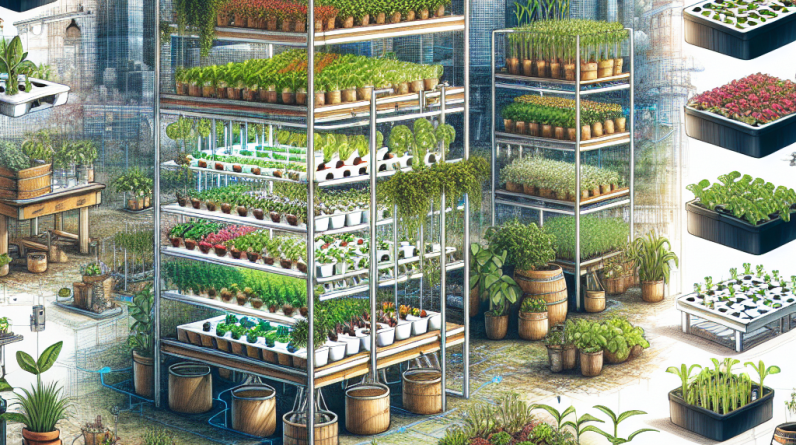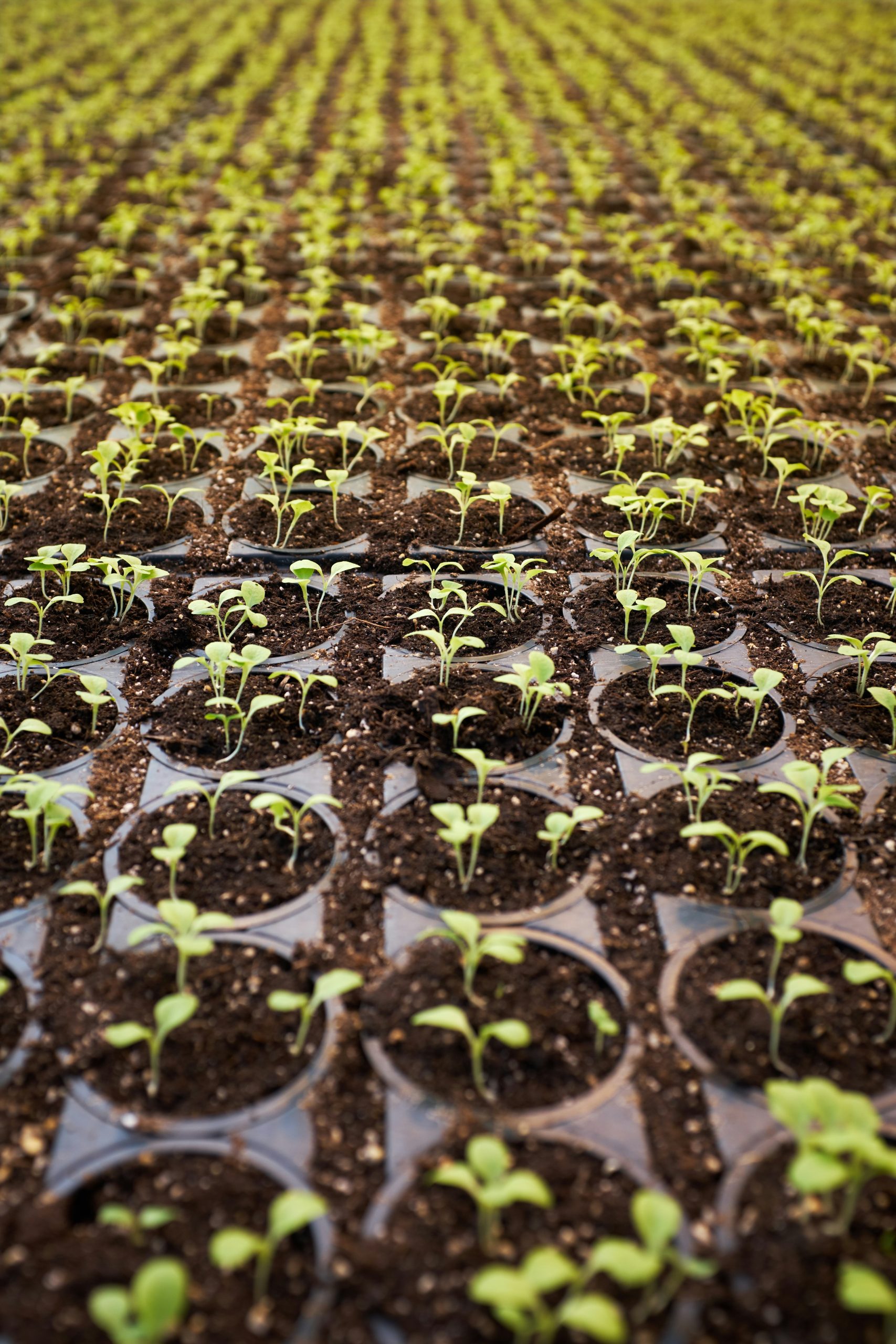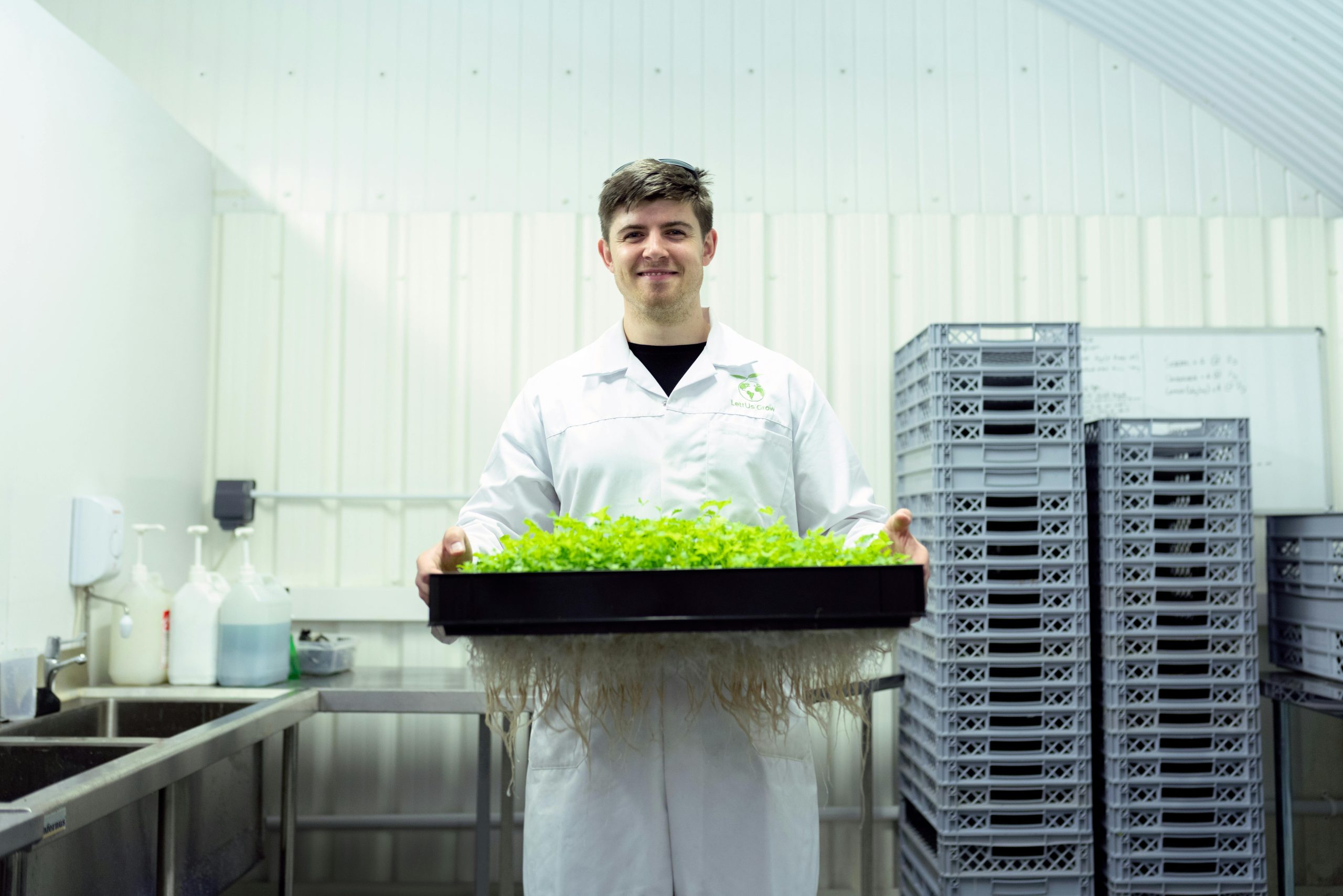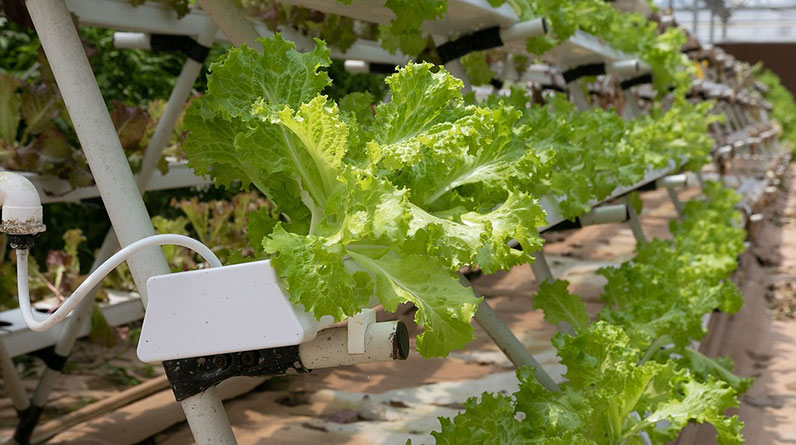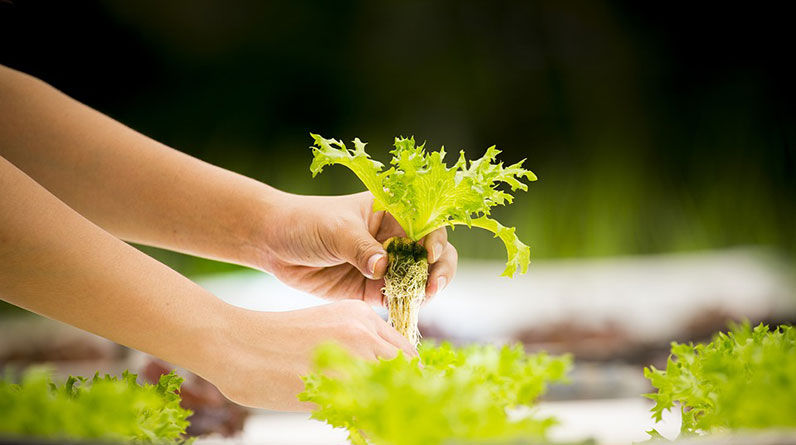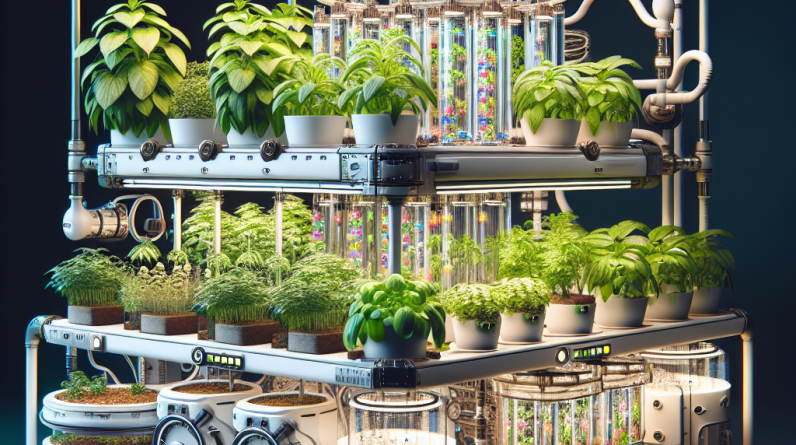
Table of Contents
- Introduction: Understanding aeroponic vs hydroponic systems
- 1. What is Aeroponics?
- 2. What is Hydroponics?
- 3. Comparing Growth Speed and Efficiency
- 4. Cost and Investment Analysis
- 5. Maintenance and Operational Complexity
- 6. Best Crops for Aeroponic and Hydroponic Systems in 2025
- 7. Innovations and Future Trends
- 8. Critical Factors for Choosing Between Aeroponic vs Hydroponic
- 9. Environmental Impact and Sustainability
- 10. Final Verdict: Which System is Faster and Better?
- FAQs
1. Introduction: Understanding aeroponic vs hydroponic systems
Overview of Modern Plant Growing Technologies
In 2025, growers are exploring innovative methods to boost plant growth and maximize yields. Among these, aeroponic vs hydroponic systems are two popular soilless cultivation techniques that have revolutionized the industry. Understanding the core differences between these systems is essential for growers aiming to grow faster and more efficiently.
Both methods eliminate soil, but they differ significantly in how they deliver nutrients and moisture to plants. This comparison helps determine which system is best suited for specific goals, especially when optimizing for faster growth in limited spaces or controlled environments.
By the end of this guide, you’ll understand the unique advantages of each method and discover effective strategies to accelerate plant development in 2025. This knowledge is vital whether you’re a hobbyist or commercial grower seeking competitive edge.
2. What is Aeroponics?
Definition and Basic Principles
Aeroponics is an innovative soilless growing technique where plant roots hang in a closed environment and are misted with nutrient-rich water. In 2025, aeroponics stands out for its ability to deliver nutrients directly to the roots in tiny droplets, promoting rapid growth.
This system minimizes water use while maximizing oxygen exposure for roots, which can lead to faster development compared to traditional methods. Its precision control over nutrient delivery makes it appealing for high-yield, fast-turnaround crops.
Many commercial farms now utilize aeroponics to grow leafy greens, herbs, and even strawberries efficiently. The technology advances in 2025 include automated misting systems and sensors that fine-tune nutrient delivery for peak performance.
Advantages in Growth Speed
One key benefit of aeroponics is its potential to accelerate plant growth cycles significantly. Since roots are exposed to optimal oxygen and nutrient conditions, plants can develop faster than in other systems. Studies indicate that plants grown aeroponically can mature up to 25% faster.
Growers report harvest times reduced from typical 60-70 days for lettuce to as few as 45 days using aeroponics. This speed increase translates directly to higher productivity and quicker return on investment.
Furthermore, aeroponics allows precise environmental control, making it easier to optimize conditions for faster growth, especially when combined with AI-driven monitoring systems in 2025.
3. What is Hydroponics?
Understanding Hydroponic Cultivation
Hydroponics is one of the oldest and most established soilless cultivation methods, where plants grow with their roots submerged in nutrient-rich water solutions. In 2025, hydroponic systems have evolved with advanced nutrient delivery and automation, making them versatile for various crops.
This technique benefits from a wide range of configurationsâdeep water culture, nutrient film technique, and drip systemsâthat suit different scales and plant types. Hydroponics is renowned for its reliability and ability to produce high yields in confined spaces.
Many urban farms and commercial growers favor hydroponics for its scalability and proven results, supported by recent technological integrations in 2025 that improve efficiency and reduce labor costs.
Growth Efficiency and Speed
Hydroponic systems offer rapid growth rates comparable to aeroponics. However, their slower oxygen exchange compared to aeroponics can slightly limit the rate of development. Still, with proper management, many crops can mature faster than traditional soil cultivation.
For example, lettuce grown hydroponically can be harvested in 50-55 days, which is notably faster than soil-based cultivation. Nutrient solution optimization, automated pH adjustments, and pH sensors in 2025 make hydroponics even more effective for quick growth cycles.
Additionally, hydroponics allows large-scale, streamlined production, making it ideal for commercial operations seeking faster turnaround times.
4. Comparing Growth Speed and Efficiency
Speed of Plant Maturation
When comparing aeroponic vs hydroponic in 2025, both systems excel at speeding up plant maturation compared to traditional soil methods. Aeroponics often leads due to its superior oxygenation, enabling plants to grow roughly 20-25% faster.
Hydroponics remains a strong contender, with improved nutrient delivery systems that reduce time-to-harvest. Industry reports show that, on average, aeroponic systems lead to harvests 10-15 days earlier than hydroponic setups in similar conditions.
For growers aiming to maximize turnover, analyzing specific crop requirements and environmental factors helps determine which method yields faster results in practice.
Resource Utilization and Growth Rate
Both systems are resource-efficient, but aeroponics tends to use less waterâup to 90% less than traditional methodsâand delivers nutrients more precisely. This efficiency can correlate with faster growth because of better resource management.
Hydroponics, especially with advanced automation, also conserves water and nutrients but may require more maintenance. The choice between the two depends on operational scale, crop types, and environmental goals.
Research from 2025 emphasizes optimizing these systems to maximize growth speed while minimizing resource wastage, making them sustainable options for future farming.
5. Cost and Investment Analysis
Initial Setup Expenses
Investing in aeroponic vs hydroponic systems involves different costs. Aeroponics generally demands higher initial investment because of sophisticated equipment like misting units, environmental controls, and sensors. However, its faster crop cycles can justify the expense over time.
Hydroponic setups tend to be more affordable initially, with a wide range of options suitable for small to large operations. In 2025, modular systems and DIY kits further reduce barriers for new growers.
While the upfront costs are important, considering long-term operational expenses is essential for choosing the better system for your 2025 farm or garden.
Operational and Maintenance Costs
Maintaining aeroponic systems requires regular cleaning of misting nozzles and calibration of sensors. These maintenance activities, though manageable, can add to ongoing costs.
Hydroponics, benefiting from mature technology, often has established maintenance routines and readily available parts, making it more predictable in the long run.
Evaluating total costsâinitial investment plus ongoing expensesâhelps growers determine which system offers the best return for faster production in 2025 settings.
6. Best Crops for Aeroponic and Hydroponic Systems in 2025
Optimal Crops for Aeroponics
Leafy greens, herbs, and strawberries are dominant candidates for aeroponic cultivation in 2025 due to their rapid growth cycles and high market value. The system’s ability to deliver oxygen-rich nutrients makes it ideal for high-value crops with short turnaround times.
Farmers report that herbs such as basil and mint, as well as microgreens, flourish in aeroponic setups, often maturing 30% faster than traditional methods. The compact nature of aeroponics also suits urban and vertical farms.
Research highlights that aeroponics can significantly boost yields for delicate crops needing precise moisture and nutrient control.
Best Crops for Hydroponics
Tomatoes, peppers, and lettuce are among the top crops grown hydroponically in 2025, benefiting from its scalability and reliable nutrient delivery. Hydroponic systems are especially beneficial for large-scale commercial farms seeking high volume production.
Modern hydroponic setups, utilizing advanced automation, allow growers to cultivate a wide variety of crops efficiently, often reducing harvest times by about 10-15 days.
Crop selection is crucialâchoosing resilient varieties suited for hydroponic environments will maximize growth speed and yield in 2025.
7. Innovations and Future Trends
Automation and Smart Technologies
2025 sees a surge in automation in both aeroponic vs hydroponic systems, with IoT sensors, AI monitoring, and robotic harvesting becoming mainstream. These innovations help optimize conditions for faster growth and reduce manual labor.
Sensors track parameters like pH, EC, temperature, and humidity, adjusting nutrient delivery in real time to ensure plants grow at maximum speed.
Smart farm management platforms integrate data for predictive analytics, enabling growers to make data-driven decisions, accelerating crop cycles even further.
Sustainable Practices and Eco-Friendly Systems
Environmental sustainability is at the forefront in 2025. Both aeroponics and hydroponics are advancing towards zero-waste models with recycled nutrients and renewable energy sources.
Reducing water and energy consumption not only aligns with environmental goals but also speeds up returns on investment by lowering operational costs.
Innovative materials and closed-loop systems contribute to making these soilless methods increasingly sustainable and profitable.
8. Critical Factors for Choosing Between Aeroponic vs Hydroponic
Environmental Conditions and Space Constraints
The choice often hinges on available space and environmental control. Aeroponics is ideal for controlled environments with limited space, offering faster growth and higher yields.
Hydroponics provides flexibility for larger-scale setups and outdoor applications, with proven durability and scalability as of 2025.
Assessing your specific conditions will help determine which system offers the most effective pathway to grow faster.
Crop Specific Requirements
Certain crops respond better to aeroponics, especially those sensitive to root diseases and requiring precise moisture control. Others, like larger fruiting plants, may thrive best with hydroponics.
Matching crop needs with system capabilities ensures faster growth cycles and optimal yields, making your investment worthwhile in 2025.
Research and experimentation are key to fine-tuning your approach for maximum efficiency.
9. Environmental Impact and Sustainability
Water and Energy Use Efficiency
In 2025, sustainability is essential. Aeroponic vs hydroponic systems tend to use significantly less water than traditional farming, with aeroponics being particularly efficient due to minimal water use.
Energy consumption varies based on automation levels and environmental controls, but advancements aim to reduce the carbon footprint of both methods.
Implementing renewable energy sources and recycling water can further enhance sustainability while maintaining high growth speeds.
Reducing Chemical Inputs and Waste
Both systems allow precise control over chemical inputs, reducing excess use and environmental runoff. This precision not only supports faster growth by ensuring optimal nutrient levels but also minimizes ecological impact.
Innovative waste management solutions, including composting and recycling systems, are increasingly integrated into aeroponic and hydroponic farms in 2025.
This focus on sustainability aligns with global trends toward eco-friendly farming and increased crop productivity.
10. Final Verdict: Which System is Faster and Better?
Making the Best Choice for Your Goals
When comparing aeroponic vs hydroponic in 2025, both systems excel at growing plants faster than traditional soil methods. Aeroponics generally leads in speed due to its superior oxygenation and precise nutrient delivery, making it ideal for rapid crop turnover.
Hydroponics remains a versatile and reliable choice, especially suitable for larger-scale and outdoor applications. Both methods, when optimized with new technologies, can significantly accelerate growth cycles.
Evaluating these factors against your specific needs, budget, and environmental constraints will guide you to the best choice for faster, efficient cultivation.
FAQs
Q1: What is the key difference between aeroponic vs hydroponic systems?
The primary difference lies in nutrient delivery: aeroponics mists nutrients directly onto plant roots suspended in air, promoting faster growth, while hydroponics submerges roots in nutrient-rich water, which is more stable and scalable.
Q2: Which system grows plants faster in 2025â aeroponic vs hydroponic?
Typically, aeroponic systems tend to grow plants faster due to higher oxygen levels and more efficient nutrient delivery. However, with recent technological advances, hydroponics can match or even surpass this speed for certain crops.
Q3: Are aerobonics more cost-effective than hydroponics?
Initial setup for aeroponics can be more expensive, but faster crop cycles and higher yields may offset these costs in the long run. Hydroponics generally has lower upfront costs and is easier to maintain, offering a good balance between expense and efficiency in 2025.
Q4: Which crops do best with aeroponic vs hydroponic systems?
Leafy greens, herbs, and strawberries thrive in aeroponics, while larger fruiting crops like tomatoes and peppers excel in hydroponic systems. The choice depends on crop characteristics and desired growth speed.
Q5: How will innovations in 2025 impact aeroponic vs hydroponic growth?
Advances in automation, AI, and sustainable materials will enhance both systems, making them faster, more efficient, and environmentally friendly. This will further widen the gap in growth speed and productivity.
Conclusion
In 2025, choosing between aeroponic vs hydroponic systems depends heavily on your specific needs, space, crop types, and sustainability goals. Both techniques have proven to accelerate plant growth significantly compared to traditional methods, with aeroponics often leading in speed due to its oxygenation benefits. By leveraging current trends and technological innovations, growers can implement strategies to grow faster, increase yields, and optimize resources. Whether you opt for aeroponics or hydroponics, understanding their strengths and limitations will help you make informed decisions for a productive 2025.


